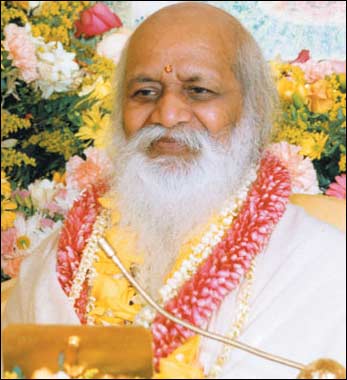

Maharishi Gandharva Veda

Gandharva Veda is known in modern time as Indian Classical Music. There are two branches–North Indian Classical Music–Uttar Bhartiya Shastriya Sangeet and South Indian Classical Music– Karnataka Sangeet. Gandharva Veda is Upaveda of Sama Veda.Gandharva Veda is the Melody of Nature.
Gandharvan means a Master or a perfect Musician with total knowledge of his field.All notes (swaras), melodies (ragas) and rhythms (Taals) in universe are expressions of notes and rhythms of nature. These melodies and rhythms are also present in physiology or body or all creatures and these rectify all imbalances in nature. These notes and rhythms also balance doshas-Vata, Pitta and Kapha in physiology. Listening to a particular raga at the right time brings harmony between the physiology and nature.
A variety of studies have shown how significantly music affects the human Physiology and Psychology. It can change pulse rate, circulation, blood pressure, metabolism and respiration rate. Gandharva Veda has been utilized as treatment in many hospitals to alleviate pain and decrease the need for pain medication and anesthesia. Maharishi Gandharva Veda goes far beyond the relaxation of the physiology — it attunes the mind and body with the cycles of Nature. Classical Gandharva Veda texts prescribe different ragas or melodies for each period of the day. A morning raga can be energizing, while an evening raga promotes relaxation. Specific ragas are also prescribed to balance specific doshas and diseases.
These rhythms and melodies of nature originate in the Vedic tradition of India. The Rishies or Vedic sages of India, cognized the inherent intelligence of these frequencies and mirrored them through music. Maharishi Gandharva Veda is the coherent flow of sound, designed to promote balance, inner peace and better health.
Properly performing these melodies at the proper times of the day neutralizes stress in the atmosphere and creates a harmonizing influence, not only for the individual but for the whole world. Maharishi Gandharva Veda offers recorded ragas for all the 24 hours of the day, featuring various instruments such as the Sitar, Flute, Santoor, Sarod and Vocal.
Gandharva Veda includes all 3 branches; Vocal music-singing, Instrumental music and Dance
Geetam vadyam tatha nrityam trayam sangeet muchyate
Vocal singing has pure classical music and light music, which includes, Geet, Gazal, Thumri, Dadra, Chaiti, Hori etc. Beside that there are hundreds of folk music compositions available in different part of the country.
Different types of instruments are also there. String Instruments (Taar Vadya) like Sitar, Surbahar, Sarod, Ektara, Santoor etc., Bow Instruments (Gaj Vadya), like Violin, Esraj&TaarShehnai, Sarangi etc., Wind Instruments (Sushir Vadya) like Flute, Shehnai, Sundari, Been, Harmonium & Turhi etc., Percussion Instruments (Taal Vadya), like Dholak, Pakhawaj, Mridangam, Naal, Khole, Dukkar, Damroo, Manjira & Dhapli etc.
With the singing and performance of instrument, one of the percussion instrument is played to maintain the rhythm. These rhythms are known as Taal in Gandharva Veda.
The common Taals are Dadra of 6 beats-matra, Roopak of 7 matra, Kaharva of 8 matra, Jhaptaal of 10 matra, Ektaal of 12 matra, Dhamar and Deepchandi of 14 matra and Teentaal of 16 beats.
